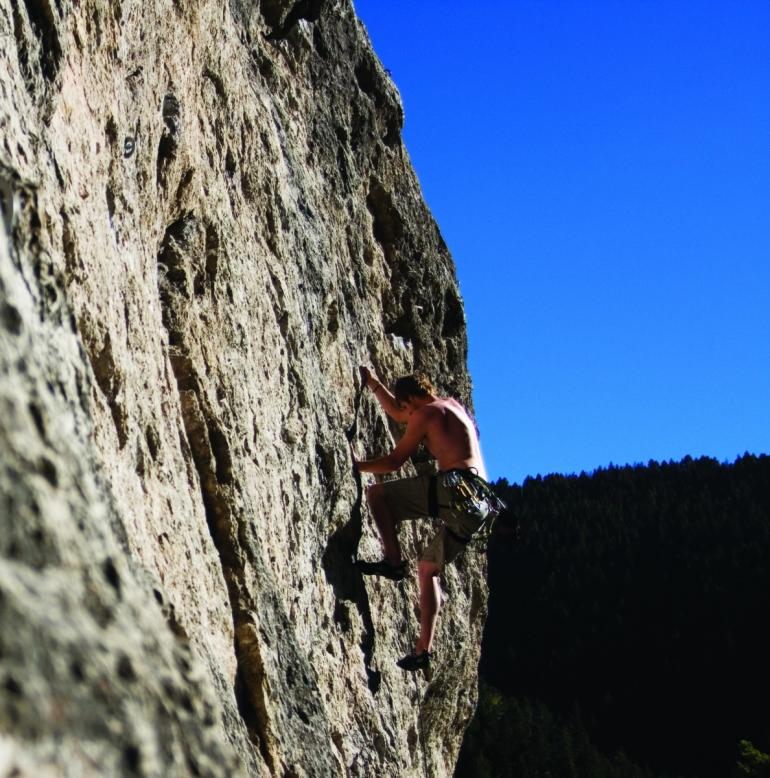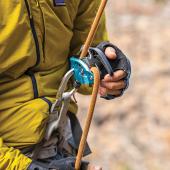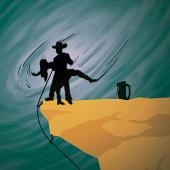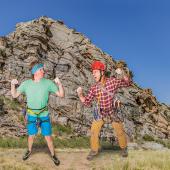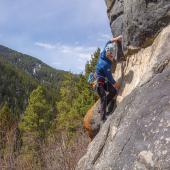Anchor Management
Sixty feet off the ground, arms pulsing with lactic acid, you call to your belayer: "Watch me!" Your last bolt is a few feet below you, but rather than climbing back to its safety, you put your faith in the system and go for it. The bomber jug that was teasing you from above proves to be nothing more than a shadow. As you slip and drop into space, your belayer responds. The rope comes taut. The bolt, as it always has before, holds. Or does it?
Most climbers take for granted the reliability of the permanent protection afforded to us by the pioneers of our routes. By and by, this practice is justified on climbs around southwest Montana, where a majority of the hardware installed is of high quality. With a cornucopia of options available, though, you can assume that climbers have used them all.
Where Did Those Anchors Come From?
The early days of Bozeman's climbing history saw our trailblazers protecting their ascents on lead, with hand drills and 1/4-inch compression bolts. Homemade bolt hangers, cut from angle iron, and fixed pitons provided safety where removable protection could not be found.
The European approach of protecting overhanging face routes by rappelling from above with battery-powered hammer drills made its way to Bozeman in the late 1980s. Since then, the public servants of our sport have fixed hundreds of routes with protective hardware. Much of this hardware has now fallen victim to overuse, neglect, and weather. As a result it needs to be replaced.
The Replacements
The Southwest Montana Climbers Coalition (SMCC) has accepted the onus of this task with the development of its Anchor Management Program. Initially receiving assistance from the nationally sponsored Anchor Replacement Initiative, SMCC replaced worn anchors at Practice Rock, Rocky Canyon, and throughout the Gallatin Canyon. In 2006, the SMCC adopted a standard anchor system for the program. With the generous support of Northern Lights Trading Company, SMCC purchased 50 sets of the FIXE Chain Anchor. This system is incredibly strong, durable, user-friendly, and functions well for top-rope, multipitch, and/or rappel stations. In addition to anchor replacement, the SMCC is also interested in replacing worn or dangerous pre-existing permanent protection (bolts, hangers, fixed pitons, etc.)
How to Find a Bad Anchor
Because not all current anchor systems can, should, or will be replaced, the SMCC needs help finding suspect anchors and protection. Signs might include, but are not limited to:
Rusted bolts
Anchors that spin but don't tighten
Worn chain end links
Anchor sets that don't evenly distribute the downward force
Webbing anchors
Piton anchors
Other random hardware store miscellany
To report any of these, go to montanaclimbers.org/contact/badbolt. In an effort to increase the lifespan of any anchor system, please use your own quickdraws or carabiners when top-roping.
Aaron Hjelt is the director of Touch the Sky, a Bozeman nonprofit dedicated to getting youth outdoors through climbing. Get more information at montanaclimbers.org. Note that SMCC will not add protection to pre-existing routes, and it will replace dangerous bolts or add rappel stations to aid the flow of traffic on popular climbs at the discretion of the SMCC board of directors.


